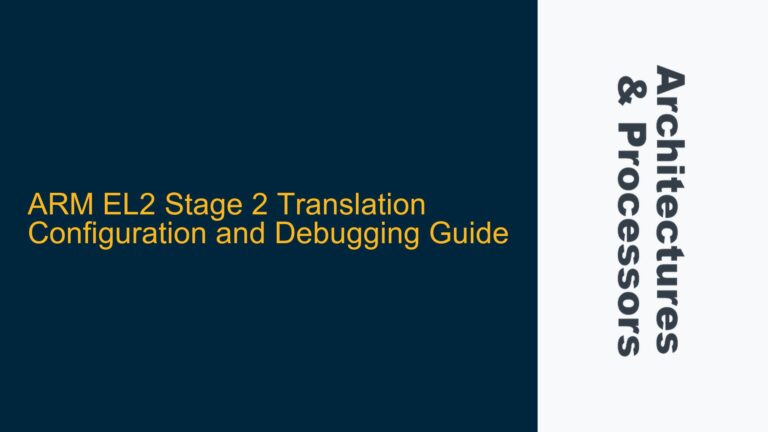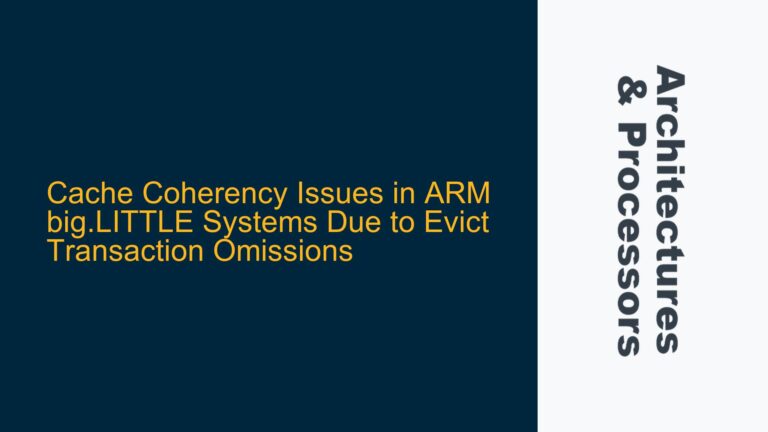ARM Cortex-M4 Stack Protector Malfunction Due to Incorrect Guard Value Comparison
The issue at hand involves the GCC 9 stack protector mechanism on a bare-metal ARM Cortex-M4 system. The stack protector is designed to detect stack corruption by placing a guard value on the stack and verifying its integrity before function return. However, in this specific case, the GCC 9 compiler is generating code that compares the address of the stack guard rather than its value. This behavior deviates from the expected functionality, where the stack protector should compare the actual value of the guard to detect stack corruption.
The observed behavior is evident in the disassembled code, where the compiler emits instructions that load the address of the __stack_chk_guard symbol into a register and then compare this address with another address stored on the stack. This comparison is performed using the eors (exclusive OR) instruction, which checks for address equality rather than value equality. As a result, the stack protector fails to detect stack corruption, rendering it ineffective.
The issue manifests when compiling with GCC 9.3.1 (gcc-arm-none-eabi-9-2020-q2-update) using the following flags: -std=gnu11, -mcpu=cortex-m4, -mfpu=fpv4-sp-d16, -mfloat-abi=hard, -ffunction-sections, -fdata-sections, -fstack-protector-strong, --specs=nano.specs, and --specs=nosys.specs. The problem does not occur with GCC 8.x, indicating a regression or intentional change in GCC 9.
The disassembly reveals the following key points:
- The
__stack_chk_guardsymbol is placed in the.bsssection at address0x000000000011ad1c. - The function prologue saves the address of
__stack_chk_guardonto the stack (str r3, [sp, #68]). - The function epilogue retrieves the saved address and compares it with the current address of
__stack_chk_guardusingeors r2, r3. - The comparison checks if the addresses match, not the values stored at those addresses.
This behavior is problematic because the stack protector’s primary purpose is to detect changes to the guard value, not its address. If the stack is corrupted, the guard value may be overwritten, but its address remains unchanged. Consequently, the stack protector fails to detect such corruption, leaving the system vulnerable to stack-based attacks or unintended behavior.
GCC 9 Stack Protector Implementation Flaw and Memory Access Patterns
The root cause of this issue lies in the GCC 9 stack protector implementation, specifically in how it handles the __stack_chk_guard symbol and its associated memory access patterns. The following factors contribute to the problem:
-
Incorrect Memory Access Semantics: The generated code accesses the
__stack_chk_guardsymbol incorrectly. Instead of loading the value stored at the address of__stack_chk_guard, the compiler loads the address itself and performs comparisons based on it. This violates the intended semantics of the stack protector mechanism. -
Literal Pool Usage: The compiler uses a literal pool to store the address of
__stack_chk_guard. The address is loaded into a register (ldr r3, [pc, #56]) and then dereferenced to obtain the actual address of__stack_chk_guard. However, the subsequent operations do not use this value correctly. -
Missing Value Comparison: The stack protector should compare the value of
__stack_chk_guardstored on the stack with the current value at the__stack_chk_guardaddress. Instead, the generated code compares the addresses themselves, which is meaningless for detecting stack corruption. -
Potential Compiler Bug: The behavior aligns with GCC PR85434, which addresses issues related to stack protector code generation. However, the exact cause may be a regression or an unintended side effect of changes in GCC 9.
-
Cortex-M4 Specific Considerations: The Cortex-M4’s Thumb-2 instruction set and memory model may influence how the compiler generates code for stack protection. The use of
eorsfor comparison and the handling of literal pools may be specific to this architecture.
The following table summarizes the key differences between the expected and observed behavior:
| Aspect | Expected Behavior | Observed Behavior |
|---|---|---|
| Guard Value Storage | Store value of __stack_chk_guard on stack |
Store address of __stack_chk_guard on stack |
| Comparison Operation | Compare guard values | Compare guard addresses |
| Memory Access | Load value from __stack_chk_guard address |
Load address of __stack_chk_guard |
| Stack Corruption Detection | Detects changes to guard value | Fails to detect changes to guard value |
Implementing Correct Stack Protector Behavior with GCC 9
To address this issue, the following steps can be taken to ensure correct stack protector behavior on the Cortex-M4 with GCC 9:
-
Verify Compiler Version and Flags: Ensure that the correct compiler version and flags are being used. The issue is specific to GCC 9.3.1, so downgrading to GCC 8.x or upgrading to a later version may resolve the problem.
-
Modify Stack Protector Implementation: If upgrading or downgrading the compiler is not feasible, modify the stack protector implementation to ensure correct behavior. This can be done by overriding the
__stack_chk_guardsymbol and its associated functions. -
Custom Stack Protector Code: Implement a custom stack protector mechanism that correctly handles the guard value. This involves:
- Defining a custom
__stack_chk_guardvariable. - Implementing a custom
__stack_chk_failfunction to handle stack corruption. - Ensuring that the guard value is stored and compared correctly.
- Defining a custom
-
Compiler Workarounds: Use compiler-specific workarounds to force correct behavior. For example, use inline assembly to ensure that the guard value is loaded and compared correctly.
-
Testing and Validation: Thoroughly test the stack protector mechanism to ensure that it detects stack corruption as expected. This includes:
- Writing test cases that intentionally corrupt the stack.
- Verifying that the stack protector triggers the
__stack_chk_failfunction. - Ensuring that the system behaves correctly in the presence of stack corruption.
Detailed Implementation Steps
Step 1: Define a Custom __stack_chk_guard Variable
Define a custom __stack_chk_guard variable in a separate source file to ensure that it is initialized correctly. For example:
// stack_protector.c
#include <stdint.h>
uintptr_t __stack_chk_guard = 0xDEADBEEF; // Example guard value
Step 2: Implement a Custom __stack_chk_fail Function
Implement a custom __stack_chk_fail function to handle stack corruption. This function should log the error, halt the system, or take other appropriate actions. For example:
// stack_protector.c
#include <stdint.h>
void __stack_chk_fail(void) {
// Handle stack corruption (e.g., log error, halt system)
while (1); // Infinite loop to halt the system
}
Step 3: Modify Function Prologue and Epilogue
Modify the function prologue and epilogue to ensure that the guard value is stored and compared correctly. This can be done using inline assembly or by modifying the compiler’s stack protector implementation.
// Example function with custom stack protector
void my_function(void) {
uintptr_t guard = __stack_chk_guard;
// Function body
// Check guard value
if (guard != __stack_chk_guard) {
__stack_chk_fail();
}
}
Step 4: Test the Stack Protector Mechanism
Write test cases to verify that the stack protector detects stack corruption. For example:
// test_stack_protector.c
#include <stdint.h>
#include <string.h>
void corrupt_stack(void) {
uint8_t buffer[64];
memset(buffer, 0xFF, sizeof(buffer)); // Corrupt the stack
}
int main(void) {
corrupt_stack();
return 0;
}
Compile and run the test cases to ensure that the stack protector triggers the __stack_chk_fail function when the stack is corrupted.
Conclusion
The issue with GCC 9’s stack protector on the Cortex-M4 stems from incorrect handling of the __stack_chk_guard symbol, leading to address comparisons instead of value comparisons. This renders the stack protector ineffective against stack corruption. By understanding the root cause and implementing the steps outlined above, developers can ensure that the stack protector functions correctly, safeguarding their systems against stack-based vulnerabilities.






